Uncovering the new findings within the superb fortifications of Baekje’s final days
Buyeo National Research Institute of Cultural Heritage
GIM Daeyoung


(Source: Baekje World Heritage Center)
The final days of the ancient Baekje kingdom are coming back to life through new research conducted on the mighty earthen defenses that have been preserved in the town of Buyeo
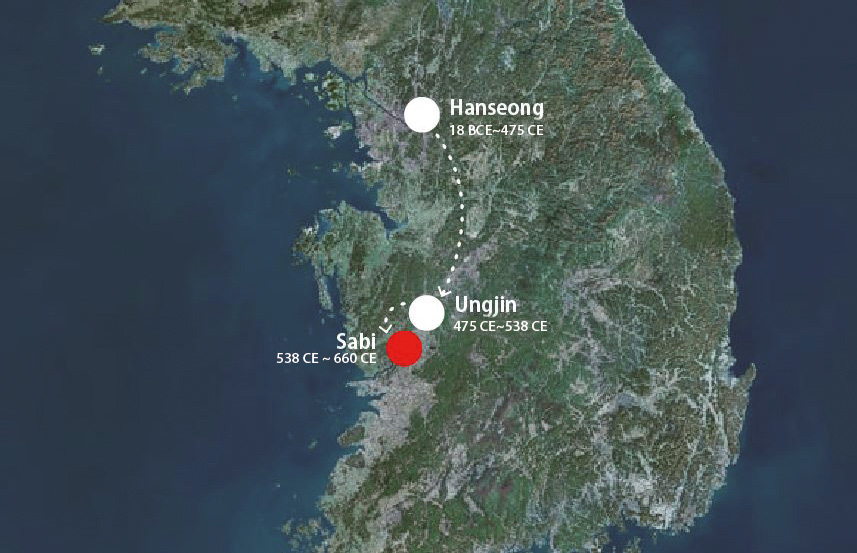

Baekje (18 BCE–660 CE) was one of the ancient kingdoms of Korea that occupied the southwestern region of the Korean Peninsula. During its reign, Baekje relocated its capital twice and based the names of three capitals on the regions which divided Baekje into the Hanseong period (18 BCE–475 CE), the Ungjin period (475–538), and the Sabi period (538–660).
During the Ungjin period, Baekje restored its previous power, and in 538 (the 16th year of King Seong’s reign) relocated its capital to Sabi (present-day Buyeo). For a hundred and twenty-three years until the fall of Baekje, the Sabi capital served as the ancient kingdom’s political, economic, social and cultural hub.
The most prominent characteristic of Sabi is that it was surrounded by the Baengmagang River to its north, south and west. Moreover, its outer wall which originated from the Busosanseong Fortress located at the center of Sabi’s northern area, was built along its eastern boundary in a way that took full defensive advantage of the area’s topography. Since the shape of its wall resembled that of a half-moon, the capital was also known as Banwolseong (Half-Moon Fortress).
The outer wall of Sabi is now referred to as the Naseong City Wall with its remains clearly present in the Neungsan-ri area to the east of Buyeo-eup.




The core of an ancient capital was typically its royal palace. Unfortunately, the current understanding of Sabi’s original palace site is limited. The only certain factor is that the Busosanseong Fortress, located at the center of the northern part of Sabi as well as the Gwanbuk-ri and Ssangbuk-ri areas to the south of the fortress, are known to have been the location of the royal palace.
Busosanseong Fortress is situated behind the archaeological site in Gwanbuk-ri, which is thought to have been used for royal palace facilities. Judging from this location, the fortress likely played multiple roles of a royal fortress, a defensive fortress, or the rear garden of the royal palace.
As for Gwanbuk-ri which is located on a foothill to the south of Busosanseong Fortress, archaeological surveys identified historical remains showing connections to a royal palace. From 1982 to 2008, researchers conducted 13 surveys which identified numerous archaeological features and artifacts including a large building site the size of a royal audience hall, a large reclaimed land area, the remains of a grid road and a pond.


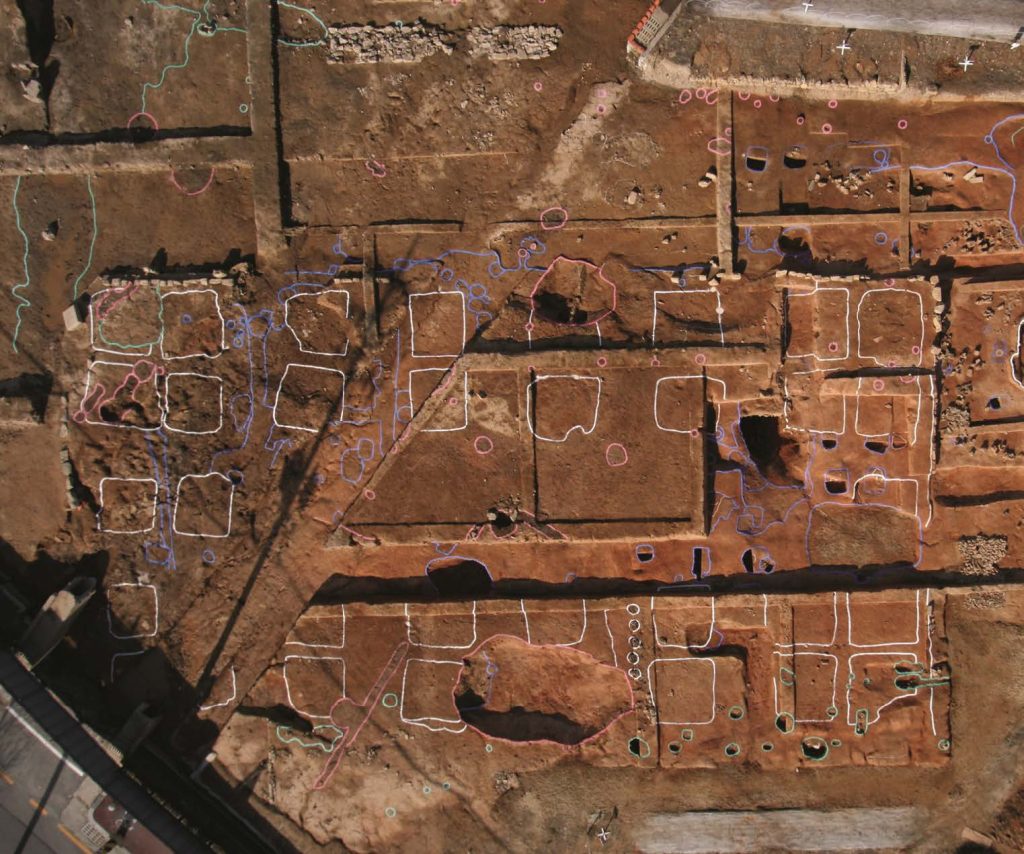

Major archaeological features, namely the large building site in Gwanbuk-ri, date to the late Sabi period (late 6th – early 7th century). Such findings led to the question of where the royal palace and other central facilities existed during the early Sabi period.
Recently, the Buyeo National Research Institute of Cultural Heritage conducted an archaeological excavation on a site located at 525-1, Ssangbuk-ri, Buyeo-eup to the east of the Buyeo Girl’s High School. Here, a large building site, a building site resembling the Chinese character 品, and Daegaya-style earthenware from the early-to-mid 6th century were discovered. These findings raised the possibility that during the early Sabi period, Baekje’s royal palace and other central facilities were located in today’s Ssangbuk-ri area rather than the Gwanbuk-ri area.
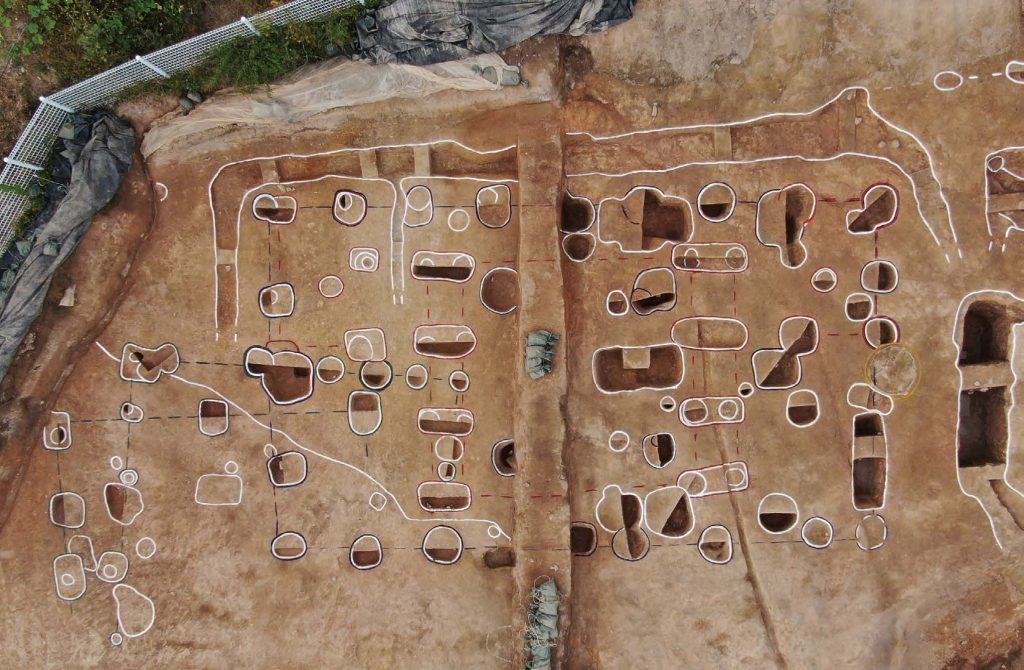

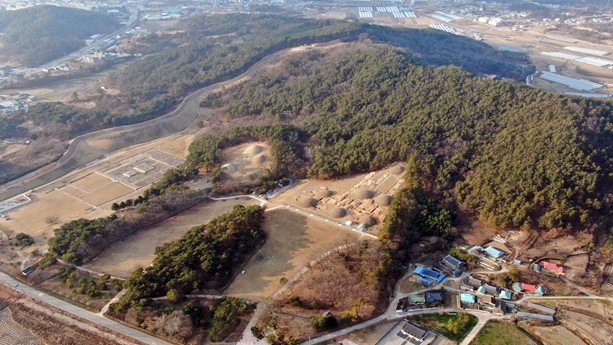

A major element that constitutes the Sabi capital’s landscape are its temples. The Biographies of Baekje in the Book of Zhou states, “There are a large number of Buddhist monks, temples and pagodas.” As indicated in this excerpt, Baekje was a land of devoted Buddhists. Even today, some 20 Buddhist temples exist in the inner and outer areas of the former capital.
Most Baekje temples feature the “one pagoda, one prayer hall” style, in which the two structures are aligned on a north–south axis. This style differs from other contemporary styles that can be found on the Korean Peninsula, specifically, the Koguryo(Goguryeo) style featuring one pagoda and three prayer halls and the Silla style featuring two pagodas.


Jeongnimsa Temple served as Baekje’s central temple, and the site is located at the center of Sabi. The Jeongnimsa Temple site, to this day, houses a five-story stone pagoda, recording more than 1,500 years of preservation. The pagoda’s first story has an inscription by Su Dingfang, a general of the Tang Dynasty of China, which tells of the historical circumstances surrounding the demise of Baekje.
In terms of its architectural style, Jeongnimsa Temple’s middle gate, pagoda, prayer hall, and lecture hall were all aligned along the north–south direction, with roofed corridors surrounding them. The same Buddhist temple layout has been identified at Shitennoji Temple in Osaka, Japan, suggesting that the Jeongnimsa-style temple layout served as a model for early Japanese temple architecture.
Outside the Naseong City Wall, the eastern boundary of Sabi are the Royal Tombs in Neungsan-ri, a cluster of royal tombs from the Sabi period and the Neungsan-ri Temple Site. These royal tombs are representative sites that showcase changes in tomb style that occurred during the late Baekje period. In particular, Tomb No. 1 (also known as Donghachong) has interior wall murals featuring the Four Guardian Deities as well as lotus flower and cloud motifs painted on the ceiling. Initially, seven tombs were restored. However, after a recent archaeological excavation, four more tombs were restored in the western part of Neungsan-ri.
The Neungsan-ri Temple Site, on the other hand, is located in the valley area between the outer edge of the capital (Naseong City Wall) and the Royal Tombs in Neungsan-ri. The temple is known to have served as a royal memorial temple during the Baekje period. At the site, the Great Guilt-bronze Incense Burner of Baekje was unearthed in 1993. Designated a National Treasure of Korea, the artifact highlights Baekje’s highly sophisticated artistry and culture.
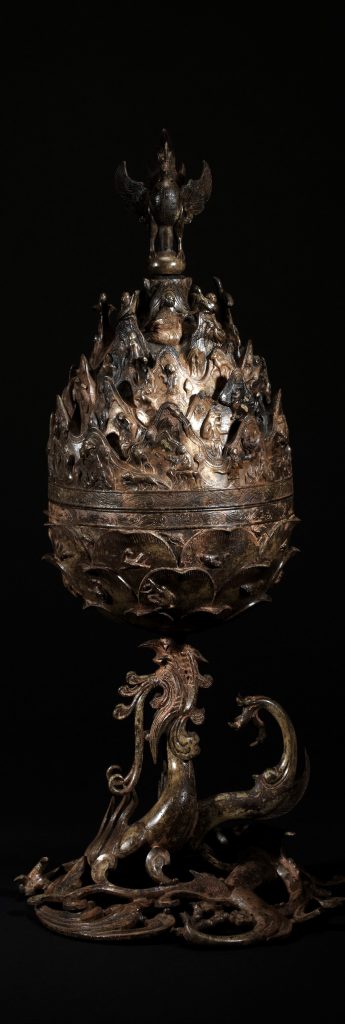

In 2015, Baekje Historic Areas, including the Sabi capital, was inscribed on the UNESCO World Heritage List. The inscription is a testament to the outstanding universal value of the culture, religion and aesthetics of late Baekje as well as global recognition of Baekje’s contribution to the prosperity of East Asian culture via exchanges with ancient nations in China and Japan. For the research, conservation, and enhancement of the Baekje Historic Areas, the Cultural Heritage Administration (CHA) has set up a master plan for major archaeological sites in former Baekje capital regions and is striving to systematically manage these regions. Along the same lines, the Buyeo National Research Institute of Cultural Heritage will continue its efforts to restore the appearance of Baekje during the Sabi period, the heyday of its cultural development, through research on Sabi – the final capital of Baekje.



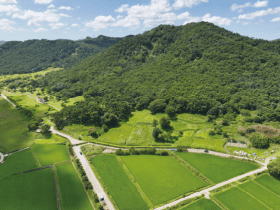

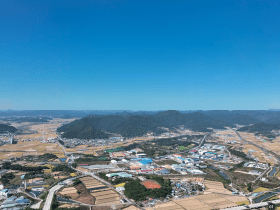
Leave a Reply